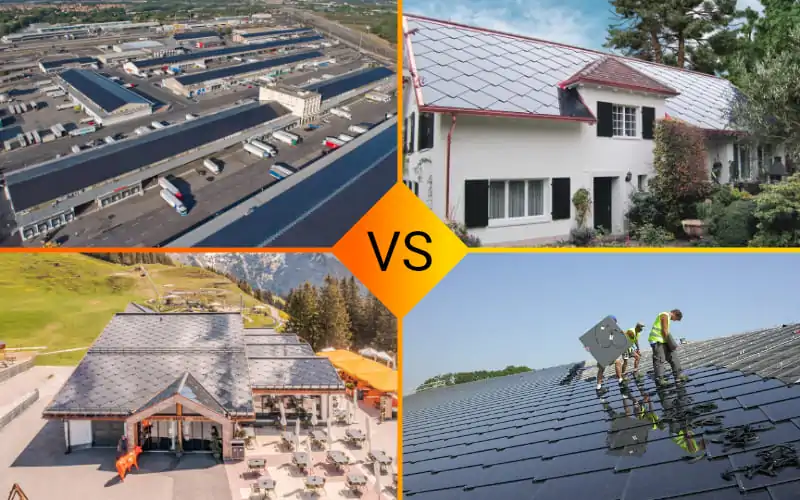Self-consumption – an efficient model of energy management
Electricity consumption, whether individual or collective, is developing at a rapid pace in Europe. Energy self-sufficiency, respect for our planet, reducing the CO₂ footprint or lowering the electricity bill: there are many reasons to invest in green energies and participate in the energy transition.

In Europe, there are more and more local initiatives for collective solar installations
Green energy and self-consumption are becoming a necessity, and more and more communities across Europe are embracing the issue. From small neighborhood communities to large housing estates, numerous collective self-consumption projects have sprung up in recent years. The principle is simple: use rooftops and common areas to install photovoltaic panels or solar tiles. The harvested green and sustainable energy is then shared with the members of the project or the residents of the city at attractive prices.
The town of Crevillent in Spain is a prime example of what a collective self-consumption project can look like at the level of an entire town. The 30,000 residents of Crevillent will actually see the roofs of their buildings covered with solar panels starting in 2019. The project, called Comptem, aims to develop a local power grid that will allow the community to generate 50% of its own electricity consumption by 2030.
Advantages and limits of individual power consumption
When people talk about individual power consumption, they immediately think of the many benefits it can provide. In fact, with a complete solar system you can:
- Become energy self-sufficient
- Dramatically reduce your own CO₂ footprint
- Participate in saving our planet
- Achieve big savings on electricity bills.
- Earn a second income by selling surplus energy.
- Invest in future-oriented technologies.
However, one cannot talk about the advantages of individual self-consumption without mentioning its disadvantages:
- The investment price for a solar system is high.
- To get the most out of his installation, you need to change some habits of electricity consumption.
- A limited management and control over the energy generated.
Collective self-consumption = a more efficient model for managing generated energy and electricity consumption.
In Switzerland, almost a third of the Swiss would like to achieve energy autonomy. Access to photovoltaic systems and the production of green energy is becoming easier and easier. Material costs are falling, there are more and more investment subsidies, and regulations are constantly evolving in favor of self-consumption. However, it can still be difficult to invest in a solar system as an individual. This is where collective self-consumption comes into play.
When people band together on a neighborhood, village or city level, there are numerous benefits. First of all, the price of materials for solar systems drops dramatically when they are purchased on a large scale. The investment cost per person is therefore lower than for an individual system. The possibility of investing collectively also allows the use of very powerful equipment for energy management and control, so that surpluses are minimized and the ratio of production to consumption is optimal. In Switzerland, 80% of self-consumption plants feed surplus production into the public grid. By interconnecting multiple consumers, it becomes much easier to absorb all local production.
Finally, the model of collective electricity consumption is very flexible and can be expanded according to new demand or increasing consumption.
A virtuous practice that accelerates the development of green energies according to the REPowerEU plan.
The benefits of self-consumption of energy, whether individual or collective, are ultimately very numerous. Its introduction is part of a sustainable development logic that advocates green energy and meets environmental, economic and social needs. It is also becoming increasingly urgent for EU countries to break away from energy dependence on other countries and continents, such as dependence on Russian gas. We see today that such dependence can be very dangerous for all sectors of society.
Action plans like REPowerEU or NextGenerationEU accelerate the energy transition and offer everyone the opportunity to become part of this green wave that is changing the energy world.
Discover how the Brunni-Bahnen Engelberg AG have joined forces to collectively consume electricity.
Further perspectives and insights into the solar landscape.
More information about the SunStyle solar tiles for residential homes as well as for commercial properties.
For more information about SunStyle’s solar roof, visit sunstyle.com
Power your interest in the future of solar roofing by following us:
Instagram @sunstyle _solar
Facebook @sunstylesolar
LinkedIn linkedin.com/company/sunstylesolar
Youtube @youtube channel


